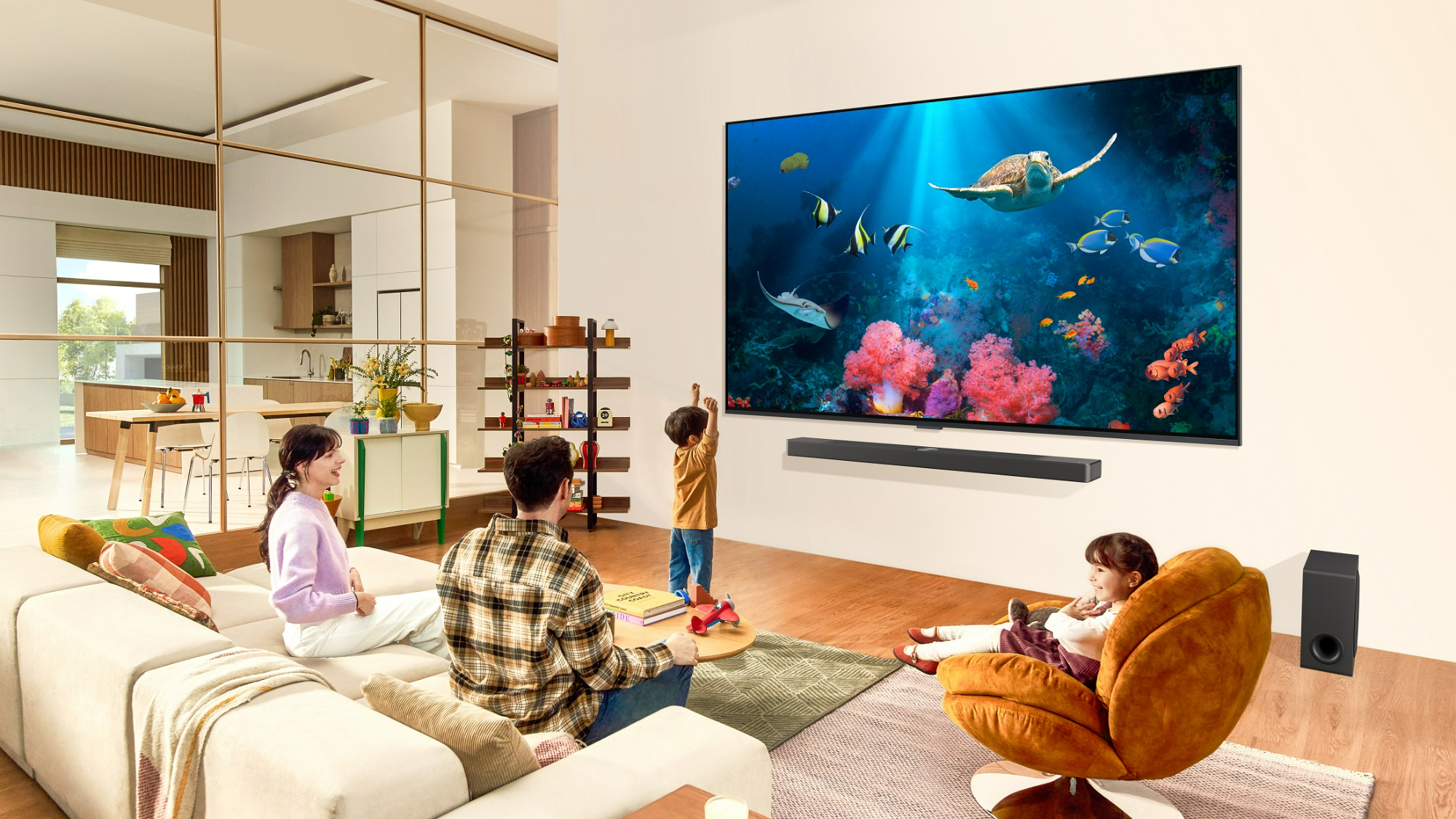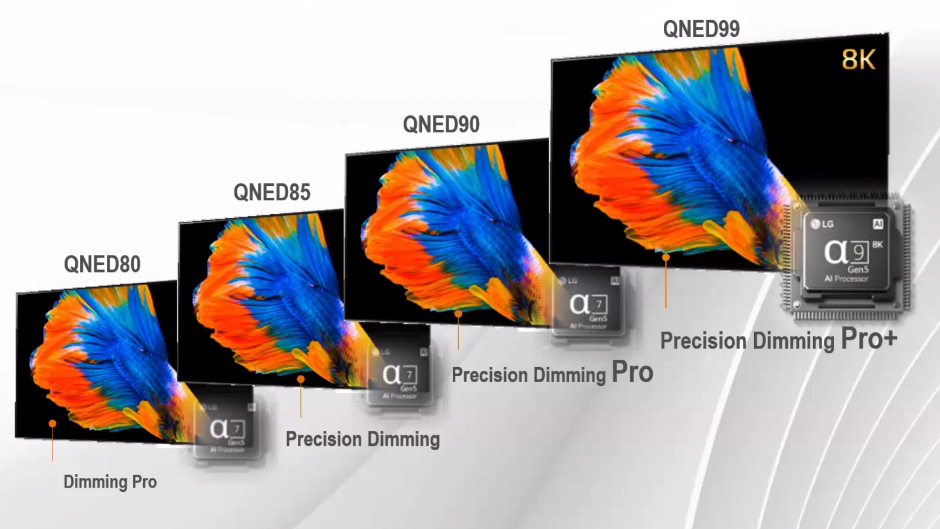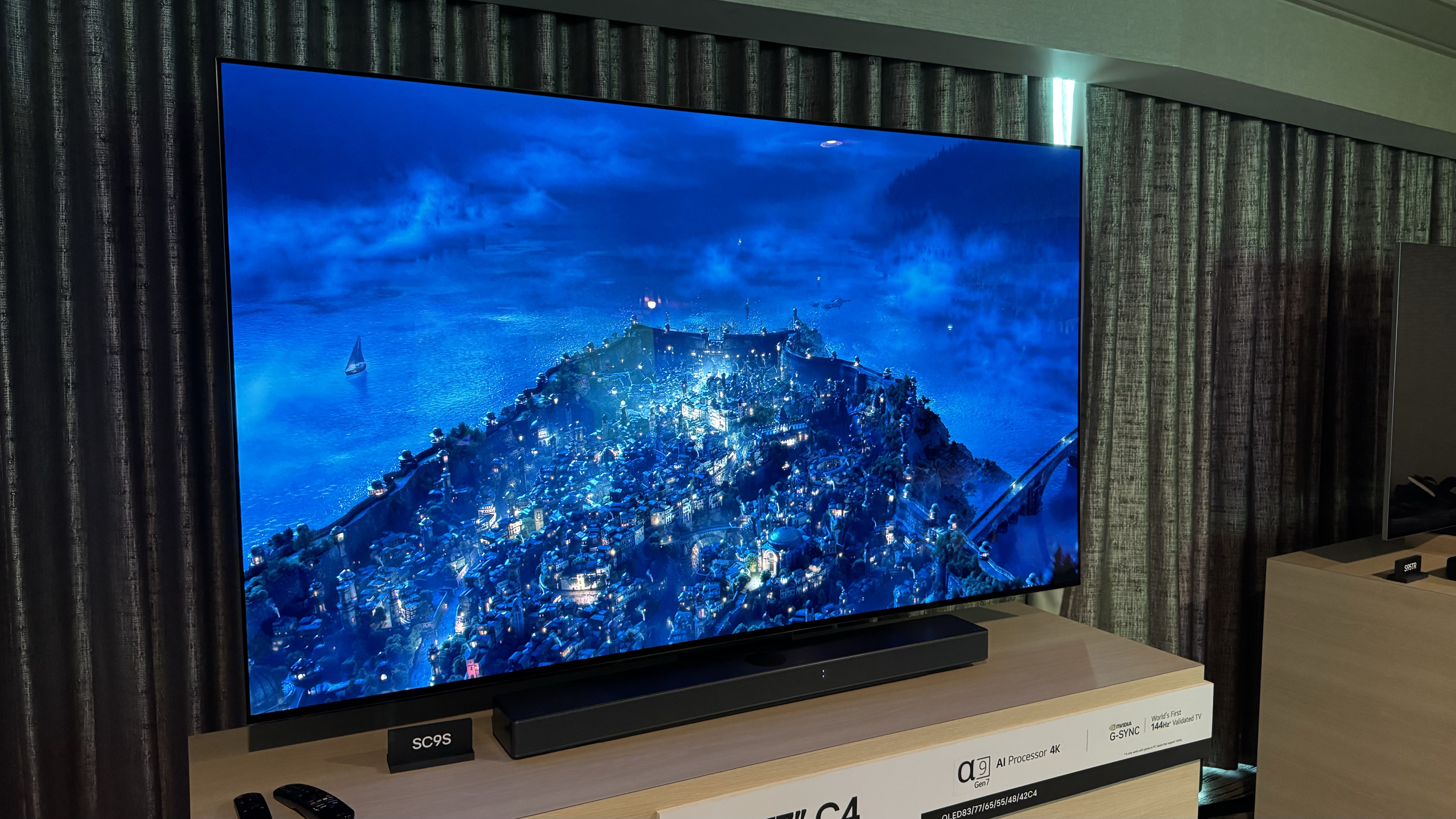QNED vs OLED: what's the difference between these TV screen technologies?
What is Quantum Nano-Emitting Diode TV tech?

If you're looking for a new TV, prepare to be bamboozled by an array of terms relating to the screen tech. Because plain vanilla OLED isn't the only game in town: there's also LCD, LED (which is really just LCD by another name), MLA, QD-OLED, QLED, Mini LED and now QNED to consider. It's enough to make you run screaming from the TV shop.
But wait. It's worth digging through all these terms, as the screen tech will have huge repercussions on the TV's picture quality. Here we'll talk you through LG's QNED tech, spell out why it's cheaper than OLED and show you how the two TV technologies compare.
What is QNED?

LG's QNED is similar to Samsung's QLED technology in that both use Quantum Dots, which are semiconducting nanocrystals that produce a broad spectrum of colours. But while Samsung was keen to stress QLED's advantages over OLED (until it started making OLED TVs itself, that is), LG says that QNED isn't quite as good as OLED. We'll get onto why that is later.
QLED stands for Quantum Light-Emitting Diode, while QNED is short for Quantum Nano-Emitting Diode. QNED TVs use Mini LED technology in conjunction with NanoCell tech to improve colour accuracy at different viewing angles.
QNED uses thousands of miniature LEDs to illuminate the LCD screen. Because they're so small, there can be more of them crammed into the space, and so they can be more precisely controlled, making for brighter images and higher contrast (the difference between the light and dark parts of the picture).
What is OLED?

OLED technology works a little differently. It stands for Organic Light-Emitting Diode, and involves two conductors passing a current through a carbon-based film in order for it to emit light. Because it can light up individual pixels, it eliminates light bleeding, where the light from one part of the screen 'bleeds' into parts of the picture where it's not wanted (a problem common to LCD/LED TVs which rely on a backlight).
QNED vs OLED: what are the main differences?
QNED is more advanced than standard LCD technology – LG claims its QNED TVs use 30,000 Mini LEDs and 2500 dimming zones. But they do still use a backlight, and as such, their blacks aren't as deep as OLEDs'. Because OLED can turn off individual pixels, it creates a true black level, whereas QNED's pixels are never off (unless the TV is switched off), just dimmed, meaning they're closer to very dark grey than true black.
OLED TVs have faster response times, making them especially well-suited to gamers for whom milliseconds count. While a QNED gaming monitor can have a response time of 1ms, OLED thrashes that, taking just 0.1ms to register a response.
Brightness has traditionally been one of OLED's weak spots, but in recent years, great strides have been made in this area. LG says its QNED TVs have a peak brightness of over 1000 nits, but its recent MLA-equipped G4 OLED TV is said to max out at 3000 nits. Though standard OLED TVs won't get anywhere near this figure, so QNED could still be brighter than them.
OLED also has the edge in terms of viewing angles. Because each pixel creates its own light and can be turned off, the picture is more precise and looks virtually the same even from a tight angle. Good news if you're in the cheap seats come movie night.
QNED TVs are usually cheaper than OLEDs though. At the time of writing, the 65-inch LG C3 costs £1699 / $1599 / AU$3295, whereas the same size LG QNED86 is just £1199 / $1199 / AU$2495. So there's a decent saving to be had.
Note: we haven't reviewed any QNED TVs yet, so can't comment definitively on the performance of any particular sets
QNED vs OLED: verdict
So there you have it. While QNED is a step up on traditional backlit TV tech, it can't hold a torch to OLED – it loses out in terms of viewing angles, brightness, black levels, contrast and response times.
It can offer higher brightness than you get from a standard (as opposed to MLA or QD-) OLED, though, and better contrast and improved black levels over traditional LCD TVs.
In short, it's best to think of QNED as a mid-range picture technology between standard LCD and OLED.
MORE:
What to expect from LG in 2024: including new QNED TVs
Best OLED TVs: the latest and greatest models, rated and ranked
OLED vs QLED: which is the best TV technology?
Get the What Hi-Fi? Newsletter
The latest hi-fi, home cinema and tech news, reviews, buying advice and deals, direct to your inbox.
Joe has been writing about tech for 20 years, first on staff at T3 magazine, then in a freelance capacity for Stuff, The Sunday Times Travel Magazine (now defunct), Men's Health, GQ, The Mirror, Trusted Reviews, TechRadar and many more. His specialities include all things mobile, headphones and speakers that he can't justifying spending money on.

